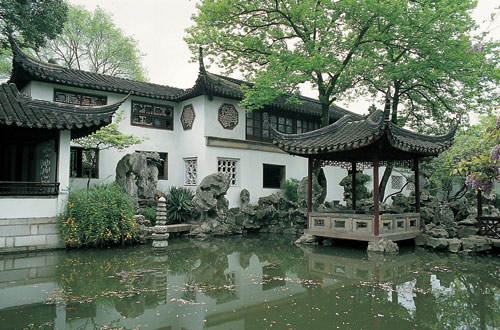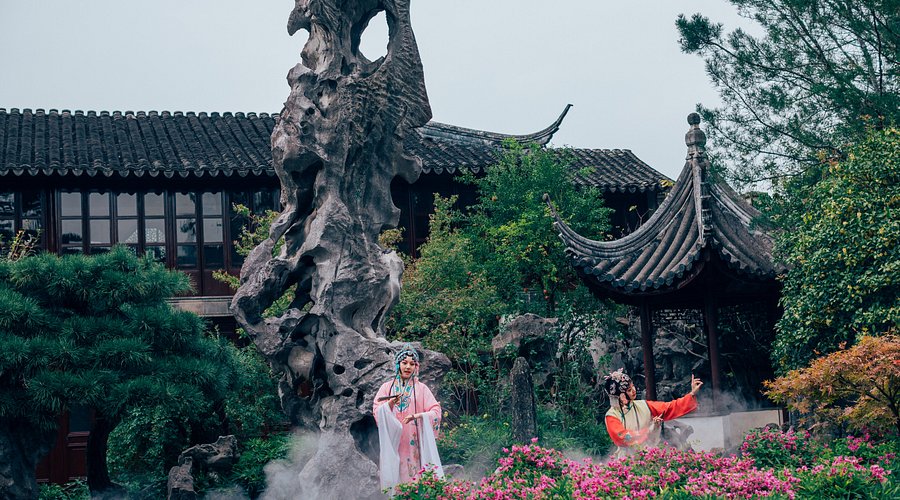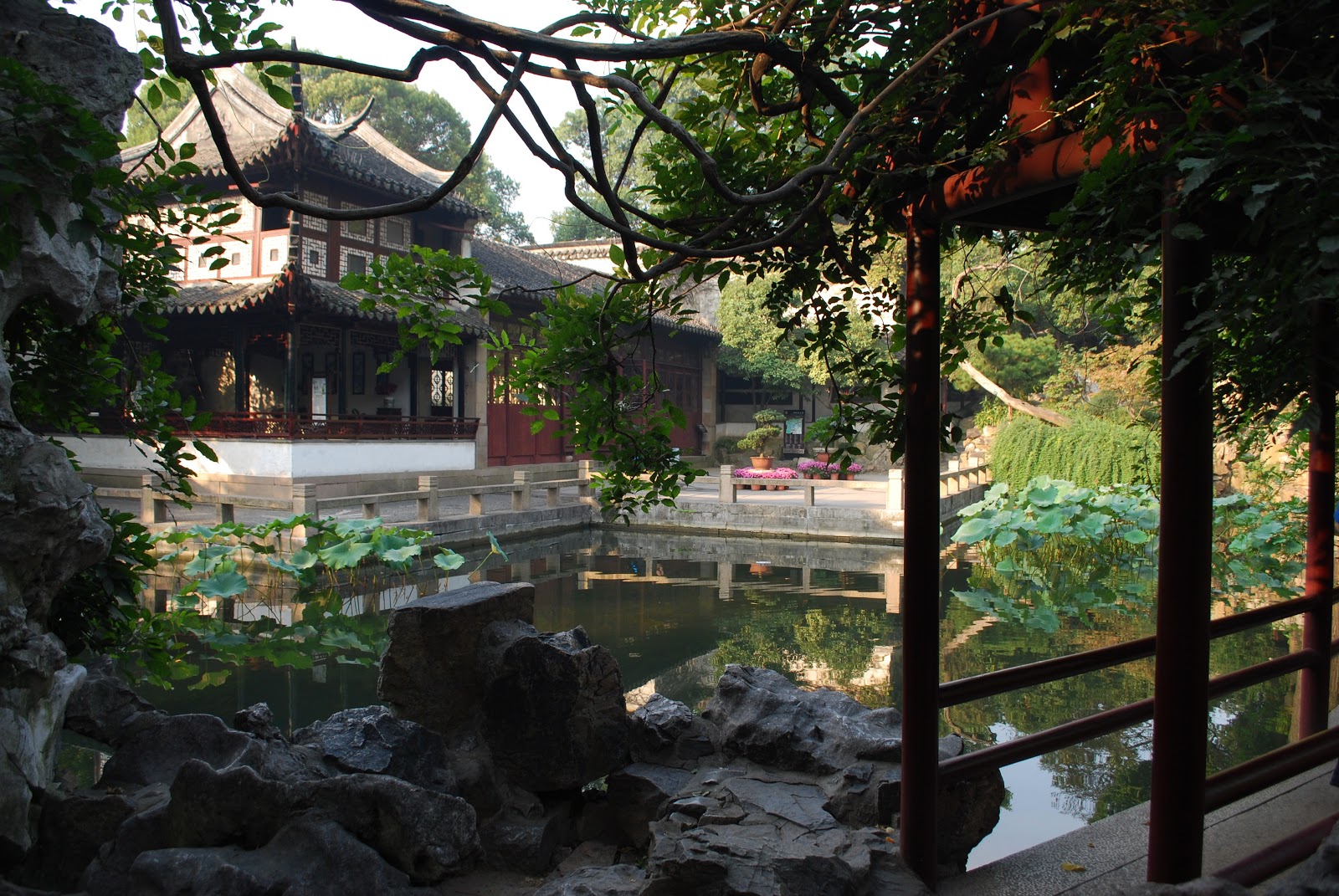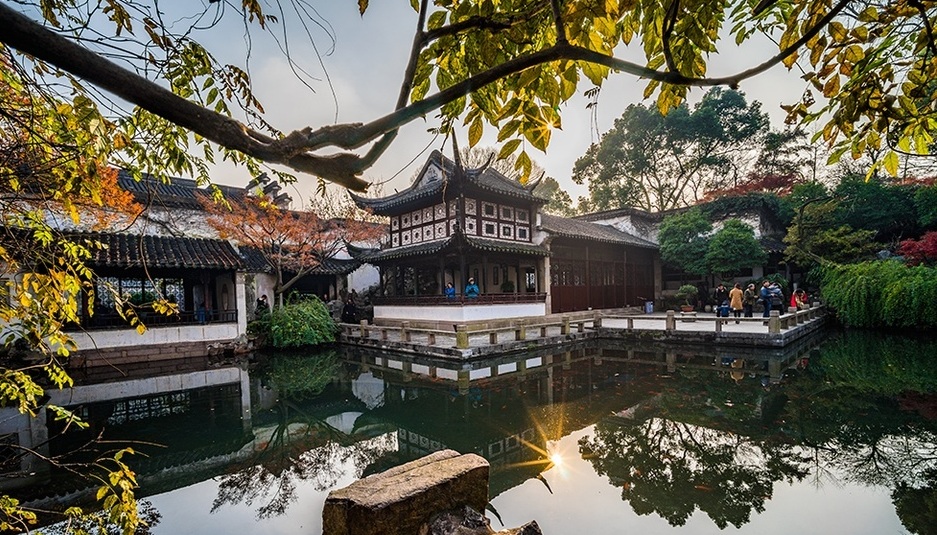Experience Serenity: How the Lingering Garden Captivates Every Visitor
An Essential Guide to Visiting Lingering Garden
Nestled in the historical heart of Suzhou, the Lingering Garden (留园) stands as a breathtaking testament to the artistry of ancient Chinese landscape design. What sets this garden apart from others is its masterful blend of natural beauty and architectural elegance, creating a harmonious space that invites visitors to lose themselves in its tranquil charm. With its intricate rockeries, serene water features, and exquisitely crafted pavilions, the garden is not just a feast for the eyes, but a living embodiment of Chinese philosophy and culture.
In this essential guide, you will discover everything you need to know for a memorable visit to the Lingering Garden. We’ll explore its rich history, dating back to the Ming Dynasty, and highlight the distinct sections that make up its expansive 23,310 square meters. From the captivating landscapes of the middle section to the delicate bonsai garden in the north, each area offers a unique experience. Additionally, we’ll provide practical information on admission prices, opening hours, and the availability of guided tours, ensuring you maximize your time in this UNESCO World Heritage site. So, prepare to embark on a journey through one of China’s most celebrated gardens, where every step reveals a new layer of beauty and cultural significance.
In This Guide
- An Essential Guide to Visiting Lingering Garden
- The Rich History and Legends of Lingering Garden
- Main Highlights: What You Absolutely Can’t Miss
- Planning Your Visit: A Practical Guide
- Tickets: Prices, Booking, and Tips
- How to Get There: A Complete Transportation Guide
- Local Cuisine and Accommodation Nearby
- Frequently Asked Questions
- Final Thoughts on Your Trip
The Rich History and Legends of Lingering Garden
A Timeless Jewel of Chinese Landscape Design
Nestled in the heart of Suzhou, the Lingering Garden (留园) stands as a testament to the rich tapestry of Chinese history and culture. Spanning over 400 years, this exquisite garden has witnessed the ebb and flow of dynasties, serving as a serene sanctuary for scholars, poets, and emperors alike.
Origins: The Ming Dynasty
The Lingering Garden was constructed in 1593 during the Ming Dynasty under the reign of Emperor Wanli. Initially built as a private retreat for a scholar named Xu Taishi, the garden reflects the philosophical ideals of the time, emphasizing harmony between humanity and nature. The meticulous design incorporates various elements such as ponds, rockeries, and pavilions, offering a space for contemplation and artistic inspiration.
Architectural Marvel: A Reflection of Time
Throughout the Qing Dynasty, the garden underwent significant renovations, enhancing its architectural features and landscaping. These changes were driven by the garden’s new owners, who sought to create a luxurious retreat that would showcase the opulence of the era. The division of the garden into distinct sections—each with its own unique characteristics—was a hallmark of its design. These areas include the tranquil middle part, the eastern section adorned with architectural beauty, the bonsai garden in the north, and the picturesque western part that captures the essence of wilderness.
Cultural Significance: A National Treasure
In 1961, the Lingering Garden was designated as a cultural relic of national importance, recognizing its artistic and historical value. A few decades later, in 1997, it earned a spot on the UNESCO World Heritage List as an exemplar of classical Chinese garden design. This acknowledgment solidified its reputation as one of China’s four most famous gardens, alongside the Summer Palace in Beijing, the Humble Administrator’s Garden in Suzhou, and the Chengde Mountain Resort.
Legends and Lore: Whispers of the Past
The Lingering Garden is steeped in legends that add to its allure. One popular tale involves a figure known as the “White-haired Taoist.” Legend has it that he would often wander through the garden, sharing wisdom with those who sought his counsel. His presence was thought to bless the garden with tranquility and insight, making it a favored spot for aspiring poets and philosophers.
Another enchanting story speaks of the garden’s “Nine-Bend Bridge,” which is said to have been inspired by the ancient belief that water spirits inhabit winding waterways. Locals claim that crossing the bridge brings good fortune, and many visitors pause to take in the view, hoping to capture a glimpse of the elusive spirits that are said to linger nearby.
A Living Legacy
Today, the Lingering Garden continues to be a vibrant reflection of Chinese culture. With its stunning landscapes and architectural wonders, it invites visitors from around the globe to immerse themselves in its beauty and history. The garden offers guided tours in English and remains a cherished site for those wishing to experience the philosophical underpinnings of traditional Chinese landscape design.
As you wander through its serene pathways, take a moment to reflect on the centuries of history that have shaped this enchanting garden. From its Ming Dynasty origins to the legends that echo through its halls, the Lingering Garden remains a captivating destination for travelers seeking to uncover the rich heritage of China.

Lingering Garden.
Main Highlights: What You Absolutely Can’t Miss
The Main Highlights of Lingering Garden
Exploring the Lingering Garden (留园) in Suzhou is like stepping into a living masterpiece of Chinese horticultural art. With its harmonious blend of natural landscapes, exquisite architecture, and rich cultural history, this garden is a must-visit destination. Here are the highlights you absolutely cannot miss during your visit:
1. The Central Landscape
The heart of the Lingering Garden features an enchanting array of landscapes and waterscapes that showcase the artistry of traditional Chinese garden design. As you stroll along the winding paths, take a moment to admire the serene ponds dotted with lotus flowers and the elegant bridges that arch gracefully over the water.
Tip: Arrive early in the morning to enjoy the tranquility of the garden before the crowds arrive. The soft morning light enhances the beauty of the scenery, making it perfect for photography.
2. The Eastern Rockeries
Here lies a stunning display of architectural beauty, highlighted by intricate limestone rockeries that mimic natural mountain formations. These man-made structures provide a breathtaking backdrop and create a sense of depth and perspective.
Tip: Look for the hidden paths and small caves within the rockeries—exploring these secret nooks can lead to delightful surprises and stunning views of the garden.
3. The Bonsai Garden
Famed for its exquisite collection of bonsai, this section showcases the meticulous art of bonsai cultivation that has been perfected over centuries. Each miniature tree tells a story of patience and dedication, reflecting the philosophy of harmony with nature.
Tip: Take your time here to appreciate the intricate details of each bonsai. You may even consider joining a guided tour to learn more about the techniques used in bonsai cultivation.
4. The Western Wilderness
In stark contrast to the manicured landscapes, the Western part of the garden invites you to embrace the beauty of wilderness. Here, you’ll find lush greenery and a section that mimics a mountain forest, providing a refreshing escape into nature.
Tip: Bring a picnic blanket and enjoy a leisurely lunch surrounded by the sounds of chirping birds and rustling leaves. The peaceful ambiance makes it an ideal spot to relax.
5. The Pavilion of Listening to the Rain
This charming pavilion is a cultural gem of the garden. With its traditional architecture and picturesque setting, it’s the perfect place to pause and reflect. The pavilion is named for the soothing sound of rain on its roof, making it a serene retreat during a drizzle.
Tip: Sit and take in the view of the surrounding water and greenery. This spot is particularly beautiful during the rainy season when the landscape feels alive with the rhythm of nature.
6. The Hall of Distant Fragrance
An architectural highlight, this hall showcases the elegance of traditional Chinese design with intricate wooden carvings and elegant furnishings. This hall serves as a reminder of the garden’s historical importance and the cultural events that once took place here.
Tip: Don’t miss the chance to enter the hall for a closer look at the craftsmanship. It’s a wonderful spot to take a break and immerse yourself in the history of the garden.
7. The Free Guided Tours
Since 2017, the Lingering Garden has provided free English guided tours every hour, making it easier for international travelers to appreciate its beauty and cultural significance. These tours offer valuable insights into the garden’s design, history, and the philosophies behind its creation.
Tip: Plan your visit around the tour schedule to enrich your experience. If you desire a more personalized experience, consider booking a professional guide who can tailor the tour to your interests.
Embrace the spirit of tranquility and beauty at the Lingering Garden, where each corner reveals a new facet of its enchanting landscape. Whether you are a garden enthusiast or a casual visitor, the charm of this cultural treasure is sure to leave a lasting impression.

Lingering Garden.
Planning Your Visit: A Practical Guide
Discovering the Lingering Garden: A Practical Guide for International Travelers
The Lingering Garden (留园) in Suzhou is a breathtaking testament to ancient Chinese garden design. With its intricate landscapes and cultural significance, it’s a must-see for any traveler. To enhance your visit, here’s a practical guide covering essential tips and insights.
Best Time to Visit
The ideal time to explore the Lingering Garden is during spring (March to May) and autumn (September to November). During these seasons, the weather is mild and pleasant, with blooming flowers and vibrant foliage enhancing the garden’s beauty. Try to visit on weekdays to avoid the weekend crowds, allowing for a more tranquil experience.
Recommended Itinerary
A visit typically lasts 1 to 2 hours. Here’s a suggested itinerary to make the most of your time:
-
Arrival & Entrance (10 minutes): Enter through the Chang Gate and take a moment to appreciate the architecture.
-
Explore the Middle Section (20 minutes): Stroll along the central landscapes and waterscapes, capturing the serene ambiance.
-
Eastern Part (20 minutes): Admire the unique architectural features and limestone rockeries. Look for hidden nooks that showcase the garden’s design intricacies.
-
Northern Part (15 minutes): Visit the bonsai garden, where you can discover the art of bonsai and its cultural significance.
-
Western Area (20 minutes): Immerse yourself in the mountain forest scenery, taking in the peaceful wilderness.
-
Guided Tour (Optional, 30 minutes): Consider joining a free hourly English tour for deeper insights into the garden’s history and philosophy.
Photography Tips
- Golden Hour: The best lighting for photography occurs during the early morning or late afternoon. Capture the soft sunlight filtering through the trees for stunning shots.
- Framing: Use the garden’s natural structures, like archways and rock formations, to frame your photos. This adds depth and interest to your compositions.
- Details Matter: Don’t forget to focus on the smaller details, such as flowers, bonsai, and architectural elements. These often tell a richer story than wide shots.
What to Wear
- Comfortable Shoes: Opt for comfortable walking shoes, as you’ll be navigating various paths and terrains.
- Weather-Appropriate Attire: Dress in layers if visiting during spring or autumn, as temperatures can fluctuate. A light jacket is advisable for cooler mornings and evenings.
- Sun Protection: If visiting in summer, wear a hat and sunscreen to shield yourself from the sun, especially while exploring the outdoor areas.
Insider Tips
-
Free Guided Tours: Take advantage of the free English guided tours offered every hour. They provide valuable context and enhance your understanding of the garden’s significance.
-
Quiet Corners: Seek out quieter areas of the garden, especially during peak hours, for a moment of solitude. The northern bonsai garden often has fewer visitors.
-
Cultural Immersion: Engage with local artisans, if available, to learn about traditional crafts like silk weaving or pottery. This adds an enriching layer to your visit.
-
Plan Your Visit: Arrive at least 30 minutes before the garden opens to be among the first inside. This allows you to enjoy the peacefulness of the garden before the crowds arrive.
-
Stay Hydrated: Bring a water bottle, especially during warmer months, as exploring the garden can be physically demanding. There are limited facilities for refreshments within the garden.
With this guide, you’re now equipped to make the most of your visit to the Lingering Garden. Enjoy the beauty, tranquility, and rich culture that this historical site has to offer!

Lingering Garden.
Tickets: Prices, Booking, and Tips
Visiting the Lingering Garden (留园) is a delightful experience that immerses you in the beauty of traditional Chinese landscape design. To help you plan your visit, here’s a breakdown of ticket options, pricing, and essential booking tips.
Ticket Information
| Ticket Type | Price (CNY) | Includes |
|---|---|---|
| General Admission | 100 | Access to all areas of the Lingering Garden |
| Student Admission | 50 | Access for students with valid ID |
| English Guided Tour (Optional) | 80 | Professional guide service with different routes |
| Audio Guide Rental | 30 | Portable audio guide for self-exploration |
Booking Tips
-
Advance Reservations: To ensure a smooth experience, it’s highly recommended to book your tickets in advance, especially during peak tourist seasons. This can typically be done through the official website or various travel platforms.
-
Group Discounts: If you are traveling with a group, inquire about group rates which might offer savings on general admission.
-
Guided Tours: While free English tours are available every hour, if you prefer a more personalized experience, consider booking a professional guide in advance. This will enhance your understanding of the garden’s rich history and intricate design.
-
Plan Your Visit: The Lingering Garden is open daily from 7:30 AM to 5:00 PM. Allocate 1-2 hours for your visit to fully appreciate the various sections of the garden.
-
Payment Options: Most ticketing platforms accept major credit cards, but it’s advisable to check the payment methods available beforehand.
By planning ahead and securing your tickets in advance, you can focus on enjoying the serene beauty of the Lingering Garden and its magnificent landscapes.
How to Get There: A Complete Transportation Guide
Reaching the Lingering Garden: A Transportation Guide
The Lingering Garden (留园), one of China’s most renowned classical gardens, is located in the heart of Suzhou. Whether you’re traveling from a nearby major city or exploring Suzhou itself, this guide will help you navigate your journey seamlessly.
From the Nearest Major City: Shanghai
By High-Speed Train:
Traveling from Shanghai to Suzhou is straightforward and efficient. The high-speed trains operate frequently from Shanghai’s Hongqiao Railway Station to Suzhou Railway Station, with a travel time of approximately 25-30 minutes.
- Cost: Tickets typically range from $8 to $15 depending on the class.
- Frequency: Trains depart every 15-30 minutes throughout the day.
By Car:
If you prefer driving, the journey from Shanghai to Suzhou takes about 1.5 to 2 hours via the G15 expressway, depending on traffic conditions.
- Cost: Tolls can vary, but expect to pay around $10 to $15.
- Parking: There are parking facilities available near the garden, but it’s advisable to arrive early, especially on weekends.
From Within Suzhou
By Public Transport:
- Bus:
- Suzhou has an extensive bus network. You can take Bus No. 2, 10, or 34, which will drop you near the Lingering Garden.
- Cost: A bus ticket costs around $0.50.
-
Travel Time: Expect a travel time of about 15-30 minutes depending on your starting point.
-
Metro:
- The nearest metro station is Liu Yuan Station (Lingering Garden Station) on Line 1. From the station, it’s a short walk to the garden entrance.
- Cost: A metro ticket costs approximately $0.50.
- Travel Time: The metro ride should take around 10-15 minutes.
By Taxi:
Taxis are a convenient option for getting around Suzhou. Simply hail a cab or use a ride-hailing app like Didi.
- Cost: A taxi fare from the city center to Lingering Garden typically ranges from $5 to $10.
- Travel Time: Expect a journey of about 10-20 minutes depending on traffic.
Getting Around the Scenic Area
Once you’ve arrived at the Lingering Garden, navigating the site is quite manageable:
-
On Foot: The garden is best explored on foot. The walking paths are well-marked, and each section of the garden offers unique landscapes, architecture, and bonsai displays. Plan for 1-2 hours to fully enjoy the attractions.
-
Guided Tours: The garden offers free English-guided tours every hour. You can also hire a professional English-speaking guide for a more personalized experience, which can help you appreciate the rich history and design of this UNESCO World Heritage site.
-
Audio Guides: For those who prefer exploring at their own pace, audio guides are available for rent, providing insights into the various garden sections and their significance.
Conclusion
Getting to the Lingering Garden is a breeze, whether you’re coming from Shanghai or within Suzhou. With a variety of transportation options available, you can easily immerse yourself in the beauty and tranquility of this historical gem. Prepare to be captivated by the stunning landscapes and rich cultural heritage that surround you!

Lingering Garden.
Local Cuisine and Accommodation Nearby
As you explore the serene beauty of the Lingering Garden in Suzhou, you’ll want to indulge in the local culinary delights and find the perfect place to rest your head after a day of sightseeing. Here’s a taste of what you can enjoy nearby.
Local Cuisine
-
Suan Ni Bai Rou (Garlic Pork Belly)
This dish features tender slices of pork belly marinated in a rich garlic sauce, served with a sprinkle of fresh coriander. The combination of flavors is both aromatic and savory, making it a must-try while in Suzhou. -
Tang Bao (Soup Dumplings)
These delightful dumplings are filled with a savory broth and minced pork, creating a delicious burst of flavor with every bite. Often served steaming hot, they are best enjoyed with a dipping sauce of vinegar and ginger. -
Sheng Jian Bao (Pan-Fried Pork Buns)
A local favorite, these buns are pan-fried to perfection, giving them a crispy bottom while keeping the filling juicy and flavorful. The combination of the crunchy exterior and succulent pork inside will leave you craving more. -
Bing Fen (Rice Noodles)
A refreshing dish popular during warm months, Bing Fen is made from rice flour and often served cold with a variety of toppings like sesame sauce, chili oil, and fresh vegetables. It’s a light and satisfying option after a day of exploration.
Accommodation Options
-
Luxury: Suzhou Marriott Hotel
Located just a short drive from the Lingering Garden, the Suzhou Marriott Hotel offers upscale accommodations with stunning views of the city. Enjoy luxurious amenities, a full-service spa, and gourmet dining options that cater to both local and international palates. -
Boutique: The Pan Pacific Suzhou
This charming hotel is set within a beautifully restored historic building and features traditional Suzhou architecture. Guests can enjoy personalized service, unique decor, and easy access to nearby attractions, making it a perfect base for exploring the city. -
Budget: GreenTree Inn Suzhou
For travelers on a budget, GreenTree Inn offers comfortable and clean accommodations at an affordable price. Located conveniently near the Lingering Garden, this hotel provides basic amenities, ensuring a pleasant stay without breaking the bank.
Whether you’re savoring the rich flavors of Suzhou’s cuisine or enjoying a restful night in one of its welcoming accommodations, your visit to the Lingering Garden will surely be a memorable experience.

Lingering Garden.
Frequently Asked Questions
Frequently Asked Questions about Lingering Garden
-
Is Lingering Garden suitable for children and the elderly?
Yes, Lingering Garden is suitable for visitors of all ages. The garden features well-maintained pathways and gentle slopes, making it accessible for strollers and those with limited mobility. However, some areas may have uneven surfaces, so caution is advised. -
How much time should I plan to spend at Lingering Garden?
A visit to Lingering Garden typically takes between 1 to 2 hours, depending on your pace and interest in exploring the various sections. If you wish to take photos or enjoy a leisurely stroll, consider allocating additional time. -
Are there English signs and guides available?
Yes, Lingering Garden provides English signage throughout the garden to help visitors navigate and understand the various features. Additionally, free English guided tours are offered every hour, and you can also opt for a professional English guide or an audio guide for a more personalized experience. -
What are the opening hours of Lingering Garden?
Lingering Garden is open daily from 7:30 AM to 5:00 PM. It’s advisable to arrive early to avoid crowds, especially during weekends and holidays. -
Is there an admission fee?
Yes, the admission fee for Lingering Garden is approximately $15. Tickets can be purchased at the entrance, and it’s recommended to check for any special discounts or packages that may be available. -
Are there restroom facilities available?
Yes, restroom facilities are available within the garden grounds. They are clean and well-maintained, ensuring a comfortable visit for all guests. -
Can I bring food or drinks into Lingering Garden?
Outside food and drinks are generally not allowed within the garden to maintain its tranquility and cleanliness. However, there are nearby cafes and restaurants where you can enjoy refreshments before or after your visit. -
Are there guided tours available for groups?
Yes, Lingering Garden offers guided tours for groups. You can arrange for a private tour with a professional guide who can tailor the experience to your interests. It’s recommended to book in advance, especially during peak tourist seasons.
Final Thoughts on Your Trip
As your journey through the enchanting Lingering Garden comes to a close, take a moment to reflect on the exquisite beauty and profound tranquility that this iconic destination offers. With its harmonious blend of landscapes, architectural elegance, and the serene whispers of nature, you have wandered through a masterpiece of ancient Chinese garden design that echoes the philosophies of balance and beauty.
Whether you found solace in the gentle ripples of the water features or marveled at the intricate rockeries, the Lingering Garden invites you to immerse yourself in a world where every path leads to a new discovery, and each corner reveals a story waiting to be told.
As you leave this tranquil oasis, carry with you not just memories of stunning vistas and cultural richness, but also a deeper appreciation for the art of nature and the wisdom it imparts. May you be inspired to seek beauty in the small moments of life, wherever your travels may take you next. Safe travels!